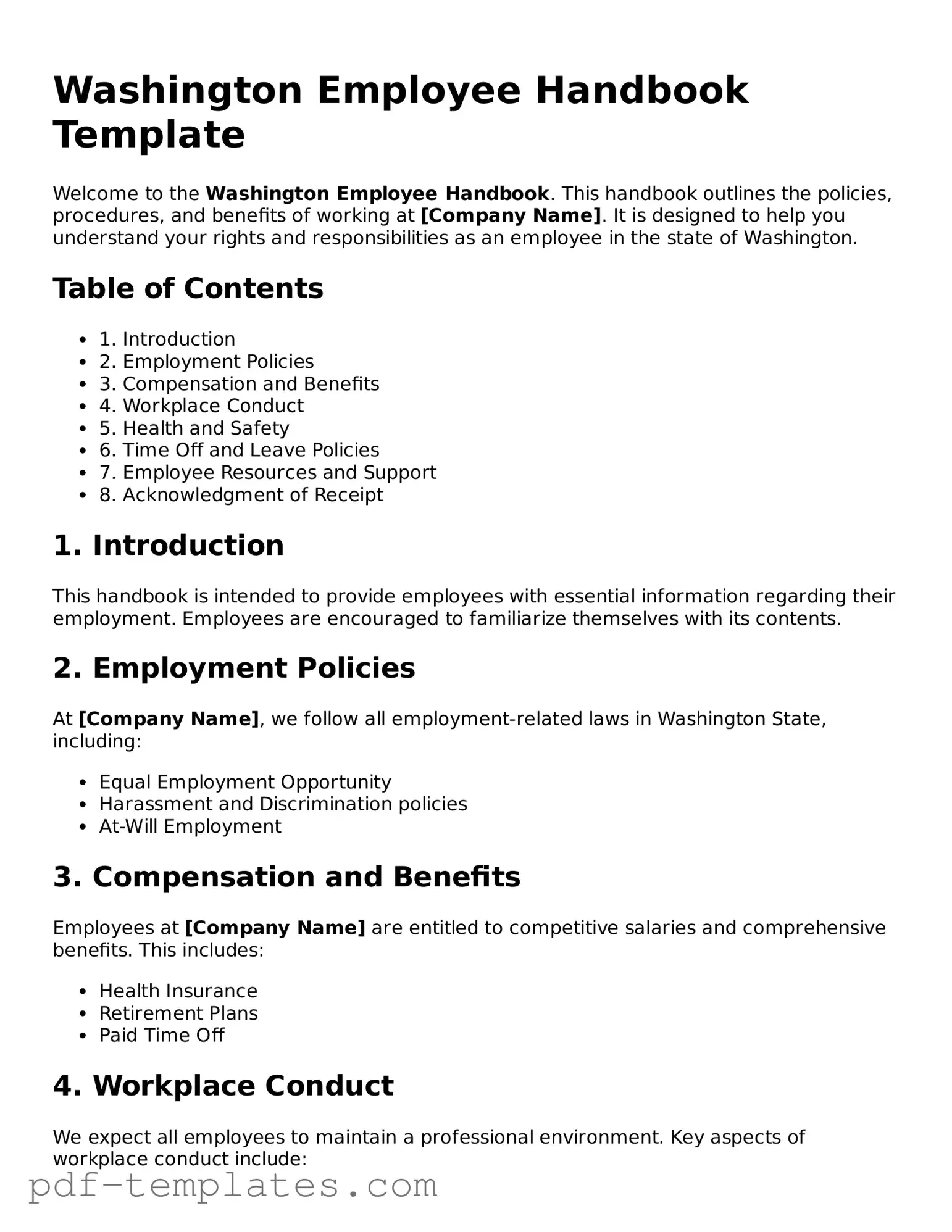The Washington Employee Handbook serves as a foundational document for employers and employees, outlining workplace policies and expectations. One similar document is the Employee Manual. Like the handbook, the employee manual provides detailed information about company policies, procedures, and employee rights. Both documents aim to create a clear understanding of the workplace environment and ensure compliance with labor laws.
Another comparable document is the Orientation Guide. This guide typically accompanies the employee handbook during onboarding. It introduces new hires to the company culture, mission, and values while summarizing key policies from the handbook. The orientation guide helps employees acclimate to their new workplace and reinforces important information found in the employee handbook.
The Code of Conduct is also similar to the Washington Employee Handbook. This document outlines acceptable behaviors and practices within the workplace. While the handbook provides a broader overview of policies, the code of conduct focuses specifically on ethical guidelines and expectations for employee behavior, ensuring a respectful and professional work environment.
In addition, the Workplace Safety Manual shares similarities with the employee handbook. This manual specifically addresses safety policies, procedures, and emergency protocols. Both documents emphasize the importance of maintaining a safe work environment, but the safety manual provides more detailed instructions on handling hazardous situations and compliance with safety regulations.
The Benefits Guide is another document that aligns with the employee handbook. This guide details the various benefits offered to employees, such as health insurance, retirement plans, and leave policies. While the handbook may mention these benefits, the benefits guide provides a comprehensive overview, helping employees understand their options and how to access them.
The Performance Review Policy document is similar in that it outlines the procedures for evaluating employee performance. While the employee handbook may touch on performance expectations, this policy provides specific criteria and processes for conducting evaluations, ensuring transparency and fairness in the review process.
The Leave Policy is another document that complements the employee handbook. This policy details the types of leave available to employees, such as sick leave, vacation, and family leave. The handbook may summarize these leave options, but the leave policy provides the specifics, including eligibility, application processes, and any required documentation.
The Anti-Harassment Policy is also closely related to the employee handbook. This policy outlines the company's commitment to maintaining a workplace free from harassment and discrimination. While the employee handbook may provide a general overview of the company’s stance on harassment, this policy goes into detail about reporting procedures, investigation processes, and consequences for violations.
Understanding legal documentation is crucial, especially when it comes to property matters. For instance, individuals seeking to manage property transfers in California may find it beneficial to refer to the Quitclaim Deed form, which serves as a straightforward mechanism for transferring real estate interests. Resources like All California Forms provide essential templates and information tailored for these situations, making the process more accessible.
The Confidentiality Agreement is another document that shares similarities with the employee handbook. This agreement outlines the expectations regarding the protection of sensitive company information. While the handbook may mention confidentiality, the agreement provides specific terms and conditions that employees must adhere to, ensuring that proprietary information remains secure.
Lastly, the Employee Grievance Procedure document is akin to the employee handbook. This procedure outlines the steps employees can take to address workplace issues or disputes. While the handbook may provide general guidance on conflict resolution, this document offers a clear, structured process for employees to follow, promoting a fair and open environment for addressing concerns.
